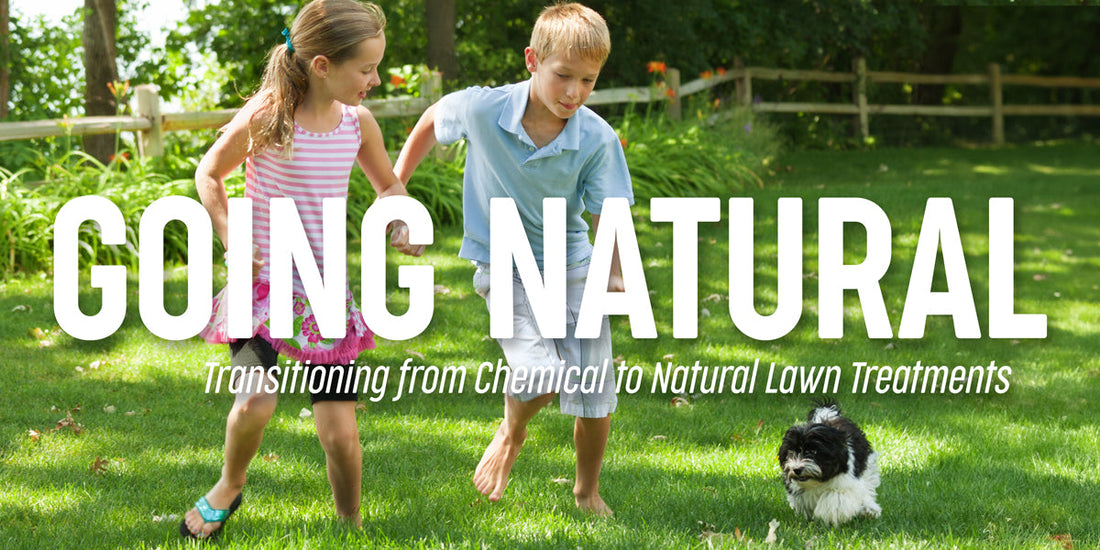
Going Natural: Transitioning Chemical to Natural Lawn Treatments
Share
With increased awareness of the potential dangers to using chemically based fertilizers and amendments, many people are turning to natural and organic options when it comes to their lawn.
There are many considerations to be made before one simply converts from synthetic to natural. Without proper planning, results will very likely fall short of expectation. We are here to help you avoid this and guide you through a smooth transition.
Soil Testing
No matter what your growing methodology is, it is always best to start with soil testing so you know exactly what you are working with. This can typically be done by purchasing a soil test kit or collaborating with your local cooperative extension. Once you understand your soil make up, you will be able to amend appropriately.
Chemical vs. Natural
The biggest difference between chemical and natural fertilizers is that chemicals are absorbed directly and quickly by the plant whereas naturals are absorbed by the soil, broken down, then feed the plant. The drawback of feeding the plant directly is that it comes at the expense of not only starving the soil, but depleting it of essential nutrients and insects vital for a healthy ecosystem. The chemicals used to feed the grass and plants are essentially killing the soil that it grows in! This is a very important consideration when transitioning to a natural lawn or garden.
Soil Recovery
The longer that chemicals have been applied to your lawn or garden, the more depleted the soil will be of nutrients. There needs to be a gradual transition from chemical to natural to maintain the health of your grass. Do not simply stop chemical application and go organic, you will be disappointed with the results. This is not because the natural ingredients are not good, it is because the chemicals have made the soil void of health. The organics will immediately go to work bringing life back to the soil but it will likely take a year for the soil to become rich enough to provide adequate health to your lawn.
 Hybrid Transition
Hybrid Transition
Using your typical application schedule, alternate synthetic and natural applications for a season. If you typically do 4 feedings, then alternate by providing 2 applications of each. This will give you a gradual taper providing the soil and grass a chance to adjust. After the season of transition, you should be all set to go completely natural barring a situation such as an outbreak that requires a stronger remedy such as a disease, weed or pest infestation.
Natural Lawn Benefits
Once the soil is healthy and the turf is strong, your lawn will have a much greater tolerance for stresses such as disease and drought. Chemical lawns are weak and fragile without continuous chemical feedings. Natural lawns will draw strength from a healthy ecosystem comprised of nutrient rich soil. Roots will reach deeper for water and organic matter continues to break down to provide constant nourishment. Multiple studies have shown that over time, a natural or organic lawn is stronger and healthier than a synthetically fed lawn, it just takes a little extra care and patience just like all important things in life.
Making the switch from a chemically treated lawn to a natural system is a rewarding journey towards a healthier environment for both you and your pets. By choosing natural fertilizers and sustainable practices, you reduce harmful chemical exposure, foster a thriving ecosystem, and create a safer, more enjoyable outdoor space.
